Portland: the city of bikeways that never sleep.
A 24-hour count of bike traffic at the corner of Southeast Ankeny and 28th Avenue observed 2,231 bike trips from noon on Thursday, May 14 to noon on Friday, May 15. In the busiest hour, 5 to 6 p.m. on Thursday, 325 bikes went past; in the least busy, 3 a.m. to 4 a.m. on Saturday, six bikes did.
“I think one of our event volunteers said it best,” Taylor Sutton, a city worker who helped organize the first 24-hour count, said in an email Tuesday. “There’s never not a bike on Ankeny.”
Portland’s 10 years of peak-hour bike count data at dozens of locations around the city would be the envy of almost any city in the world. But those counts neglect the many commuters who don’t work traditional office hours, not to mention many of the non-work trips that account for more than 80 percent of our transportation. Sutton said the 24-hour bike count was intended as a way to enrich the city’s understanding of other hours of the day.
Though the data is being used in part to assess and calibrate the city’s experiment with cheap automated bike counters, Sutton said it’s mostly intended as research for research’s sake rather than intended to answer a specific question.
“Ultimately, Every Bike Counts was a celebration for people riding their bike, regardless of destination or peak commute times; sometimes taking the opportunity to sit back and observe is a good place to start to find the questions,” Sutton said.
Our 24 Hour #EveryBikeCounts event also provides Quick Fixes" to folks' bikes. pic.twitter.com/xAXOaNwOGn
— ActiveTransportation (@PBOTactive) May 15, 2015
The event required 30 staff hours and 48 volunteer hours, including people to work a table where the city offered giveaways donated by local businesses and collected information about the origins and destinations of passers-by.
“We chose this intersection because we knew there would be a lot of bikes there (Ankeny & 28th was in the top 20 high-volume sites in last year’s count, out of 217 counted) and it is centrally located,” Sutton said. “The intersection is also a great combination of neighborhood greenway (Ankeny) and business district (28th).”
In addition to the number of bikes, Portland turned up some potentially useful information about the proportion of people riding with lights at night:
Advertisement
The purpose of people’s trips (at least among those who chose to stop and chat):
And the direction of the trip (the darker purple line is Ankeny eastbound, away from downtown; the lighter purple line is Ankeny westbound; dark green is 28th northbound; and light green is 28th northbound).
The event also observed 26 skateboard trips; the peak skateboarding hour was 7 to 8 p.m. on Friday, when five were observed:
You can see the city’s full data summary here.
Sutton said the event was also, in part, a way to raise awareness of the city’s regular peak-hour bike counts, which rely heavily on volunteers. (Volunteers can choose any Tuesday, Wednesday or Thursday from June through September to conduct counts.) A bike count training, required for first-time volunteers but optional for others, is next Tuesday.
“We could always use more volunteers!” Sutton said.

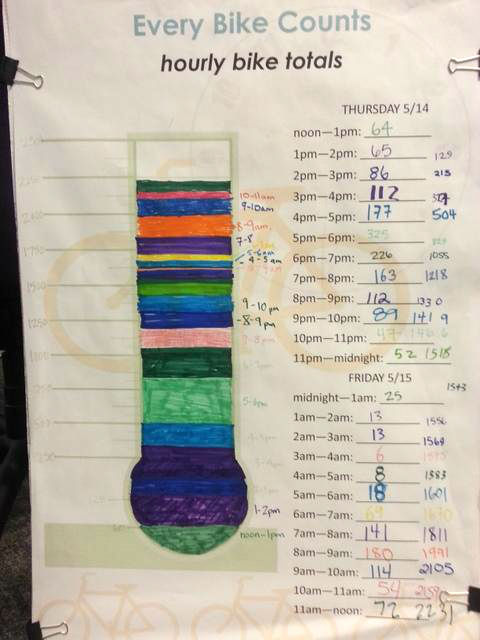
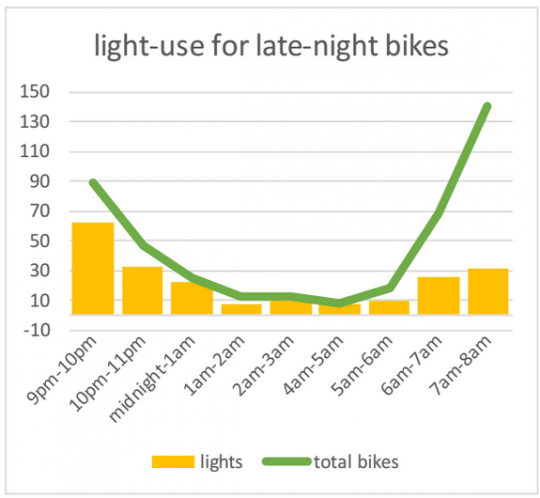
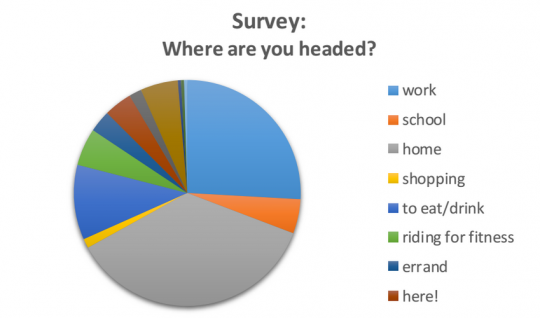
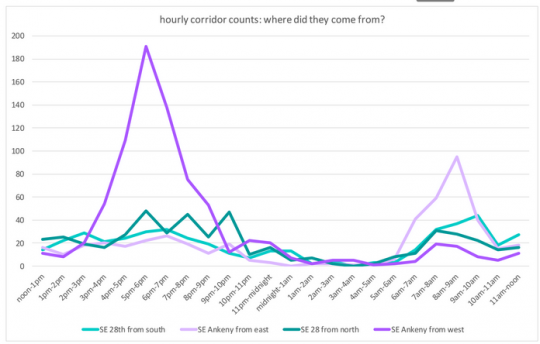
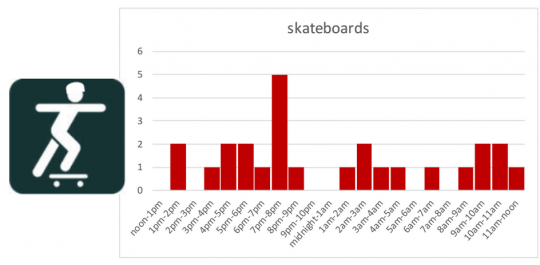
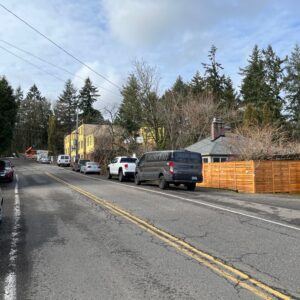
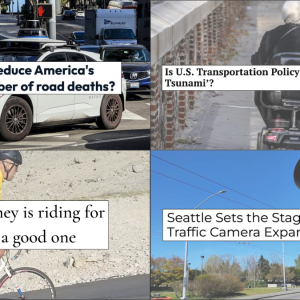

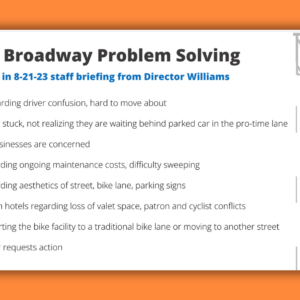
Thanks for reading.
BikePortland has served this community with independent community journalism since 2005. We rely on subscriptions from readers like you to survive. Your financial support is vital in keeping this valuable resource alive and well.
Please subscribe today to strengthen and expand our work.
Maybe we should let their business association know. I wonder how many of these businesses have lost customers because of their activism surrounding the preservation of their Precious Parking on 28th?
I know I have not spent any money on that corridor since then, and Ankeny is my most used bikeway. There are plenty of other places to eat, drink and be merry at……..so now, I look at that corridor as just a stop sign.
Me too. Too bad, because I really like Dove Vivi’s pizza.
Good point. I used to go to Laurelhurst theater once a month and would go to get gelato as well. I haven’t been back since they showed that they were more interested in a few parking spaces rather than creating a safe, practical cycling corridor that would facilitate cycling to the schools and businesses in that area.
I thought I would miss it, but I haven’t.
Unfortunately, since I have gotten out of the habit of going to that area to avoid the businesses that signed the petition, I have also not been patronizing the businesses that opposed the Laurelhurst theater owner’s self-centered free on-street parking hoarding.
It’s ironic that Laurelhurst Theater was the petition instigator when they have a generous amount of off-street parking behind the building contracted with Providence.
Yes, when we want food we go to Belmont….or any other direction… a movie we go to Montavilla. There are lots of choices now, so I can always bike somewhere that seems more friendly.
Montavilla’s Academy Theater: surrounded by on-street parking. Propose removing it and I suspect you’ll be down a “bike friendly” movie theater, Terry.
Pretty sure the academy and the laurelhurst have the same owner…
portlandmaps.com says different owners…
If the Laurelhurst would not have been the chief petitioner the decision would not factor in, but it does. Actually I live closer to the Academy than Laurelhurst. They have bike lane access and there is bike parking. When I commute downtown, I have been taking Clinton to support their businesses hoping they will support future diversion projects. The 50’s bikeway made this easy to do.
I think the safer Clinton shopping event should show our economic power. As I keep saying, the first inner east side commercial street…be it Belmont, Hawthorne or Burnside in SE that creates a seamless modern on on street bikeway through their commercial district will become the most vibrant in all of inner east Portland.
My Personal call, and what I submitted to the comprehensive plan in a few places, has been to extend the Belmont bike lanes to 45th (yes…remove parking)….then north to Burnside…then south again via 76 to the Montavilla Stark-Washington Couplet.
This would be an economic boon to all of SE Uplift, not to mention the safety and bike mode split benefits by creating an unbroken commuting corridor in-between Rocky Butte and Mont Tabor.
I doubt it. I live near the owners of the Academy and I would be very surprised if they were anti bike.
They’re not anti-bike and neither are the owners of the Laurelhurst. That’s my point.
I am sure you are correct, but they also organized against parking removal that would have provided safe bike access to 28th. From a bikeway, get our mode share up, perspective, we need to have commercial access, even if it is only one-way. If not on, then robust parallel.
I would suggest from both a public relations standpoint, and it “will be good for their business,” standpoint, for those same businesses to team up with PBOT and do two two things:
1) Endorse diversion, preferably at every arterial (Stark, Burnside, Glisan), on the 30th Greenway alternative to provide as “robust of a bikeway as possible for their customer base”
2) Team up PBOT, and fund, a series of KIOK’s on the 30th greenway alternative. These Kiok’s could be maintained by them and include all the local businesses, a map of bike parking block by block ON 28th and neighborhood news.
Then, those of us who currently are going elsewhere, might return. New bike riding customers will come. It would be good for them, good for us, and good for the whole area.
They may not be anti-bike ingeneral, but they are only conditionally pro-bike; with that condition being “no bike safety improvement project can take away parking from our business district”. They were behind the petition on 28th, so I don’t see how you can blame people for the boycott. It seems entirely logical to me. I refuse to be a member of AAA for the same reason: they lobby against bike improvement.
Blaming bike friendly businesses like the Laurelhurst and Staccato Gelato (both of which donated products to this event) for the city’s failure to secure a bike route on 28th is unfair. Bitar Brothers actively fought it but their tenants (like Dove Vivi) might have gotten on board if they’d received the outreach and input they needed. Those boycotting these businesses really aren’t helping the situation.
PBOT used the pushback from the above businesses as justification for not moving forward with the project. There is no way to create a safe route on 28th without removing some street parking. What do you suggest we do?
Leave the street parking, lower the speed limit, mark the street, install signage, put in a center curb, and make it a shared “bikes first” street like the one Jonathan reported on in Rotterdam.
This would actually be better than removing parking in my opinion, since it would remove curbtight through-traffic in front of residential areas at the south end of the corridor.
They can’t put in a center curb because of the semi trucks that turn off of 28th onto Burnside. In fact, it would behoove them to do something about that turn off of 28th. Because if you’re in the center lane on burnside trying to make a left onto 28th (towards sandy) and a semi is there, you could end up with a pancake car. It’s a huge issue. There shouldn’t be large vehicles using that narrow road anyway if parking is allowed on both sides of the street, let along turning. They can’t make that tight turn on/off Couch. They can’t do the turns easily during rush hour.
Every time the city tries to “improve” upon that corridor. They just mess it up more.
There is a big difference between encouraging people to ride their bikes to your business because it benefits your bottom line and being “bike friendly.”
A bike friendly business would support the development of sound cycling infrastructure that would allow people on bikes of all ages to take advantage of a key commercial and transportation corridor. Especially when there are 2 schools close by.
They would realize that 28th is more important for safe, low speed travel modes than as a thorough fare for trucks and cars. They would realize that their businesses and Portland benefit greatly from people walking or cycling to their doors or to other areas and as population density continues to increase mode share has to shift to active transportation for Portland to maintain its quality of life. But most importantly, they would have the wisdom to understand that addressing this proactively by implementing meaningful changes in bike and pedestrian infrastructure now is in everyone’s best interest.
I clearly remember the petition from Laurelhurst and the letter from gelato, and I do not consider these “bike friendly.” Ultimately, they were self-serving, naive and short-sighted.
I found nothing bike-friendly about the “cyclists should not ride on 28th” rhetoric coming from the owner of Staccato Gelato. Moreover, Laurelhurst and Staccato Gelato were key organizers of the petition that bypassed the public process and destroyed any realistic chance of a dedicated bike facility in the 28th commerical area. Moreover, some of the businesses that signed that petition told me that they were pressured to sign it by these businesses. IMO, the petition instigated by Laurelhurst and Staccato Gelato was Hawthorne all over again. And, frankly, i find it shocking that someone who works for the BTA is defending these businesses.
PS: I and my cohabitant were frequent customers of Laurelhurst and Stacatto prior to their sabotaging of active transport improvements.
I don’t see why the city didn’t just push through a pilot project. Make it temporary and see how things play out.
The Adam’s administration probably would have.
I love this street. It’s changing like Division is, though. Some really cool structures going up, and some really dreadfully boring ones, too.
As a West sider, it’s one of my most frequent rides on the East side.
“The intersection is also a great combination of neighborhood greenway (Ankeny) and business district (28th).”
Too bad it’s difficult to get to the businesses. I live near this intersection and I’ve seen more and more cyclists using the sidewalks to cross Burnside and get to/from businesses on 28th. Such a shame the businesses have flat-out rejected, with prejudice, making their neighbourhood safer for bikes.
The sheer volume of traffic of all kinds makes 28th not too bad from Ankeny to Flanders or so. It’s north of Glisan that car drivers do really stupid things with regularity.
Not that anyone cares, but I’ve continued to spend the same amount of money at the restaurants on 28th as before — I’ve just chosen to only eat at the restaurants that did not sign the petition. Pambiche instead of Dove Vivi, Navarre instead of LaBuca. Wolf & Bear instead of the Grilled Cheese Grill. Personal victory – the Grilled Cheese Grill closed and moved out.
There are some really interesting things in this data set.
The peak hour (5-6 pm on Thursday) accounts for 14.6 percent of the daily volume (177/2231). This is significantly higher than the typical 10 percent of weekday volumes that are associated with auto travel. This suggests we should be especially cautious about extrapolating weekday counts from shorter-duration hourly counts.
The percentage of trips by purpose for bicycle trips appears to be somewhat consistent with those of auto drivers, though there are some differences that may need some further work.
There is an apparent discrepancy between the statement by Sutton (who stated that more than 80 percent of trips were non-work trips) and the graph that clearly shows more than one-quarter of trips were destined for work.
Another issue relates to the travel purpose question. Typically, travel by purpose data sets defines “work trips” as both those going to work or returning home from work. If we adopt that definition of work trips (and assume every trip to work is matched with a trip home from work), we get a very different conclusion from this data. This suggests that “work trips” are about twice as likely to be taken by bike than by auto.
It’s really great to have this information. I hope it leads to more. Thanks to all the volunteers who participated.
Sutton is not quoted re the 80%. I. think Michael is citing accepted transportation planning figures here, not Portland specific data.
PBOT has also looked at auto peaks versus daily as part of the NG evaluation.
Auto peaks are also higher than the assumed 10%.
The asumption that every work trip has a return can not be made in this case as Ankeny is only one of multiple east side bike routes. I frequently go into town via 53rd-Clinton and return via Ankeny.
Couldn’t agree more.
I often choose routes based on whim. I try not to ride the exact same route every time, even on my most basic and most frequent trips.
And depending on my mood I sometimes favor and find the steep short hill up Multnomah more in tune with what I feel like dealing with at that moment, over the longer more gradual hills of SE Ankeny, Lincoln or Clinton when going east from city center.
Which of course is one of the best things about living on a gird, the difference in times between any of these routes is pretty minimal from city center to my eastside of South Tabor home. And falls in line with my first point in that there are almost an unlimited number of routes to make the trip as long as you don’t limit yourself to green lines on a map.
This higher peak is consistent with counts here in Victoria, Canada. Our Origin & Destination study showed that journey to work mode share was higher than for other purposes, so this would neatly explain the ‘peak-ier’ peak.
I noticed the same thing re 10%, J_R. Sitton said the usual method is to use Tues-Thurs data (not Friday, like half of this data) and to average the two peak hours to get the estimated daily bike volume.
That said, great points.
Although the graph makes it hard to tell the extent of the issue, there are a surprising number of riders without lights, during hours when the absence of a light could be particularly dangerous.
It would be interesting to look at that a bit more closely. Not in a finger-wagging frame of mind but perhaps in a more pragmatic light: While not necessarily smart or advised, is it possible that (most) people who bike without lights at night as so perspicacious, so alert, that they manage to stay out of the way of (most) dangers, simply because they are aware of their (self-imposed) vulnerability?
Perhaps this overlaps some with the spike instead of airbag logic?
http://bikeportland.org/2015/03/30/monday-roundup-distracted-driving-action-reflective-spraypaint-136293#comment-6314557
Perhaps, cycling without lights during these hours is less dangerous than most would imagine. Not that this data set evaluates this possibility, but it would be fantastic to know if there is truly a safety benefit for a cyclist when they are otherwise riding on a lighted street in a prudent manner.
“perspicacious” – Great word, but I know it does not mean drunk. (acuteness of mental vision). I would like to see the studies comparing hyper aware drunk cyclists to regular cyclists or plain drunk cyclists.
Yes, but why they included the 6am to 8am hours is beyond me. Sunrise is at 5:35 am.
Sunrise was a little later on the 15th to be pedantic.
I imagine the 6am to 8am block is included in the data set in order to be consistent with counts made at other times of the year (ie. December) when light use is more important. More data, more better.
Perhaps, but this graphic will surely get pulled out in December and taken completely out of perspective by giving the impression that more than 2/3 of the rush hour bikers aren’t using lights when they are should be.
Pretty cool. Although looking at the full PBOT report, I find it disheartening that they bothered w/ a helmet vs. no helmet count. There are lots of other stats that would have been more interesting and useful It is hard to have faith that PBOT has its head on straight and is ahead of the biking curve when someone there thinks helmet counts are more important than say counting the # of people biking w/ kids vs. those biking w/o.
Maybe they are comparing this population to a high cycling population like in the Netherlands. When the helmet percentages get really low, you know you are doing well! When helmet use is high (as it is here), you know people think biking is dangerous!
i like your optimism!
Agreed. I was just in Davis CA. I’d estimate that at least 90% of those riding bikes do not wear helmets. My most striking observation was how relaxed people were when riding. If pressed, I’d say no one on a bike was traveling faster than 10-12 mph.
I can guess at a number of factors that contribute to this: Davis is flat, it’s got a number of separated bike paths, it’s got wide bike lanes on every street, downtown is a grid of 4-way stops, and many of those riding bikes are college students who look to be riding the same bike they’ve had since 8th grade.
Humm sounds a lot like the European bicycle centers….gee I wonder if there is a connection?
People that drive places do so at all hours. I wouldn’t expect people that bike places to behave very differently. ( I’m not saying the data isn’t useful, just that I’m not surprised by it )
I’m more comfortable riding a couple of hours before rush hour starts, both to and from work (I leave at 5am and 3pm, instead of 7am & 5pm). Less cars on the road.
Ankeny skews outbound, yet it’s (generally) the best option near Burnside. Where’s the inbound coming from and why?
Fanning outbound from Ankeny/28th there is a difficult crossing at 39th, the greenway ends at 41st, and there are hills in all directions. What changes would increase ridership on that route?
There are 12 sections of pie chart, but only eight labels. What are the four unlabeled slivers?
The greenway continues east after 41st, it just diverts up to Everett. This is where a lot of the westbound traffic originates.
It should come as no surprise that Ankeny skews outbound, considering that (a) it’s relatively easy to bike onto the Burnside Bridge from the West side and get all the way to Ankeny&6th on a bike lane plus one block of low-traffic street but (b) if you get on the Burnside Bridge from the East side you are unceremoniously dumped into an aggressive car/bus/freight lane before the bridge even ends.
I can only speak for myself, but inbound from 60th/Glisan I take Couch but stay on until 16th, north to Sandy, quick left and onto Davis, then back over to Couch once the bike lane starts at 6th. Outbound I take Ankeny to 28th, north to Couch and home from there.
Davis! I have the same commute and never thought to use Davis west of Sandy. Thanks, James.
I’m curious about the photo showing the tally sheet with the thermometer-style graphic with the hand-filled, different-colored fill-up… what is this? It looks like a classic fund-raiser graphic poster – “just 100 more cyclists and we will achieve our funding goal for new infrastructure”. I guess the city haven’t yet anted up for some data analytics software and instead are using the same worksheets my kids are using in PPS.
I work in data analytics and I drew a different conclusion. It looks to me like the City printed out these cute pages and left some markers at the counting station(s) so the volunteers and staff would have some coloring to entertain themselves with, and also be reminded of why they were bothering to count bikes (better data –> better arguments for pro-bike policies –> better infrastructure, enforcement, and education)
It’s a good feeling knowing that I’m one of the six bikes keeping Ankeny rolling ever during its slowest hour of the day. 😉
As a comparison.
From 7am to 6pm on a sunny day:
Ankeny Corridor: 1390 Bicyclists
SW Moody Corridor: 1350 Bicyclists
These corridors are the bicycle arterials of Portland!